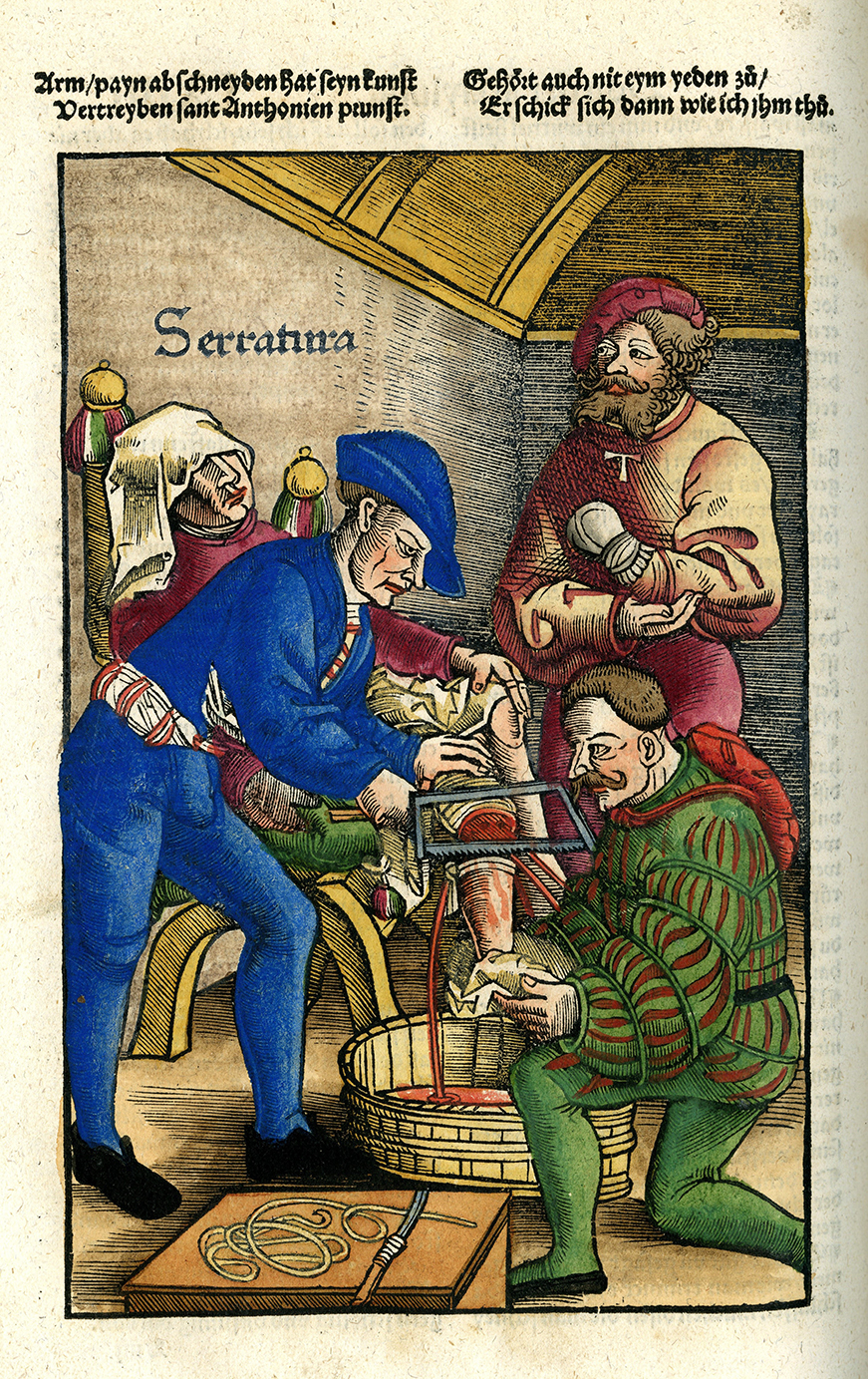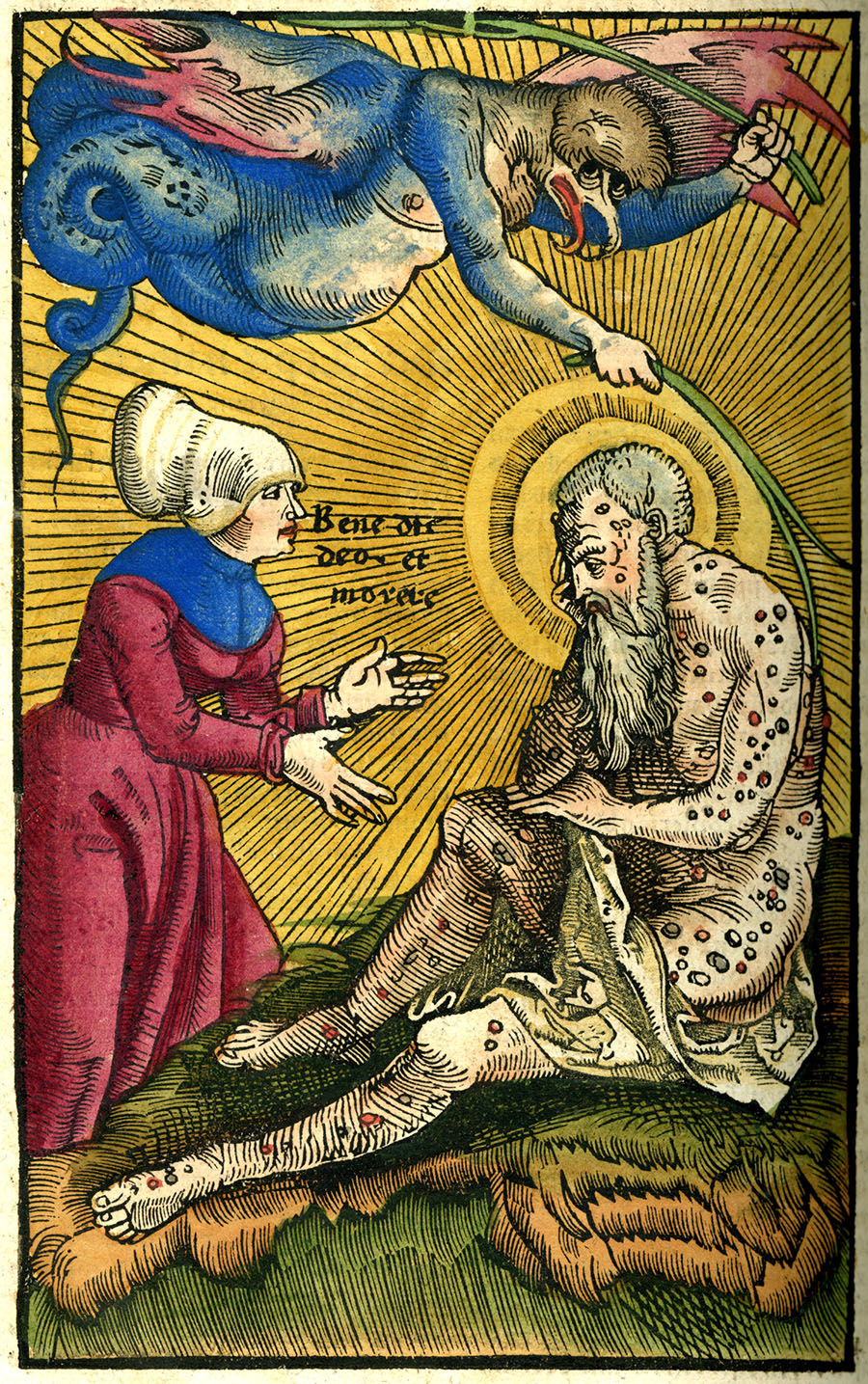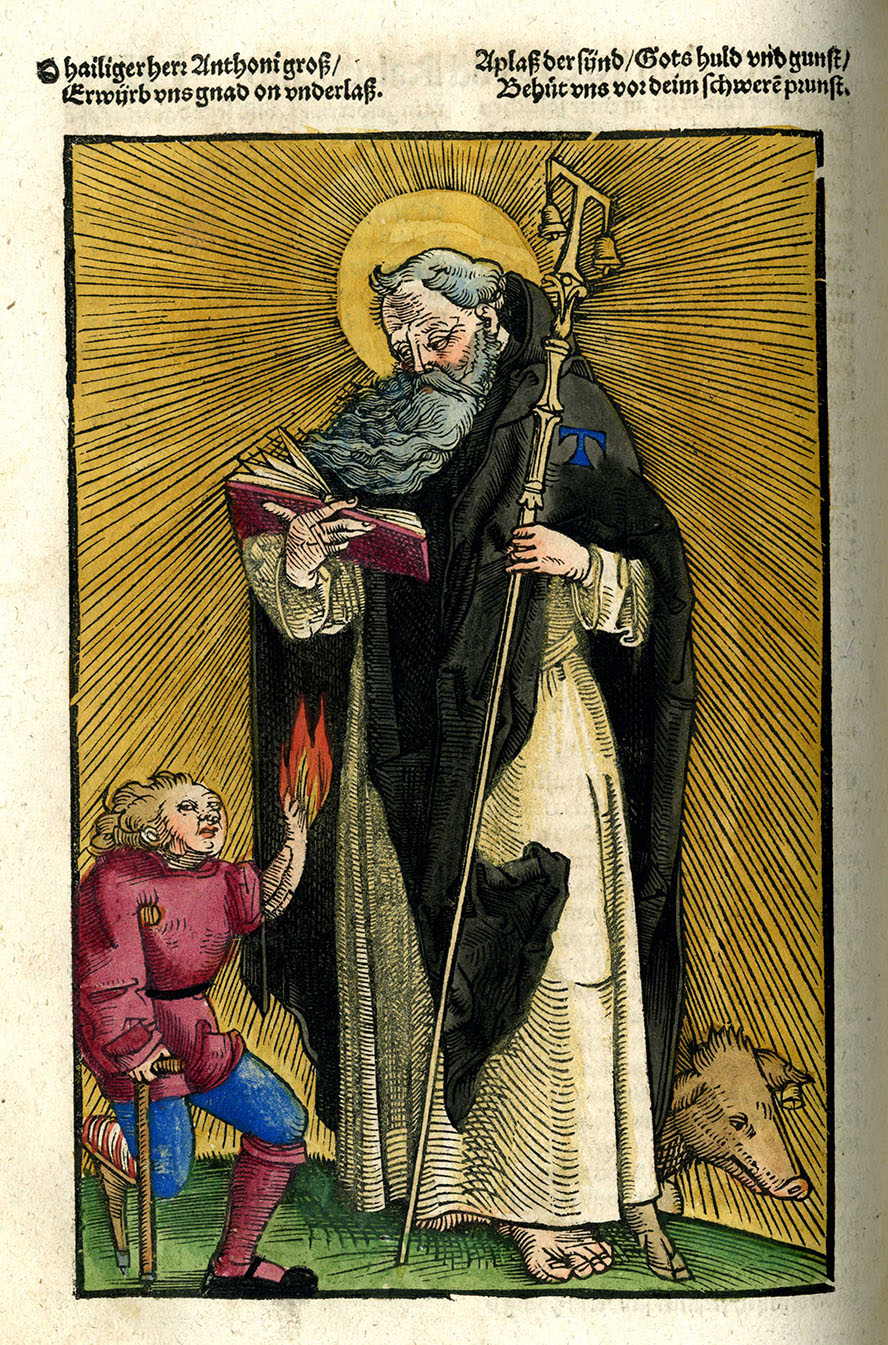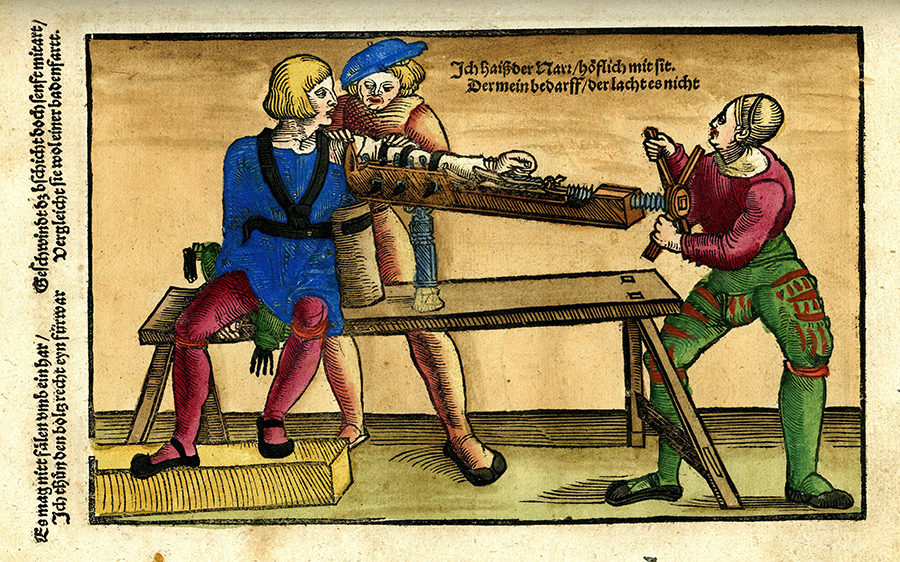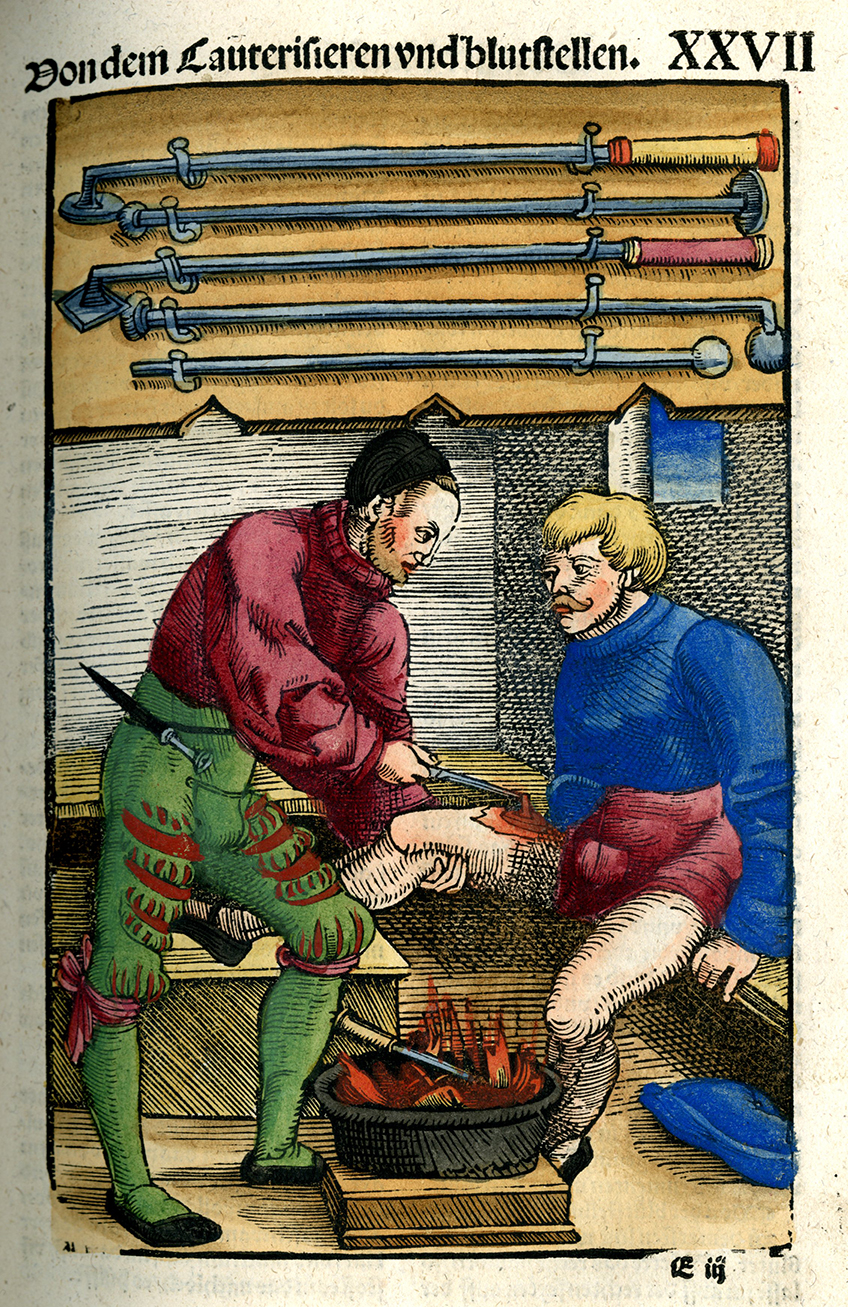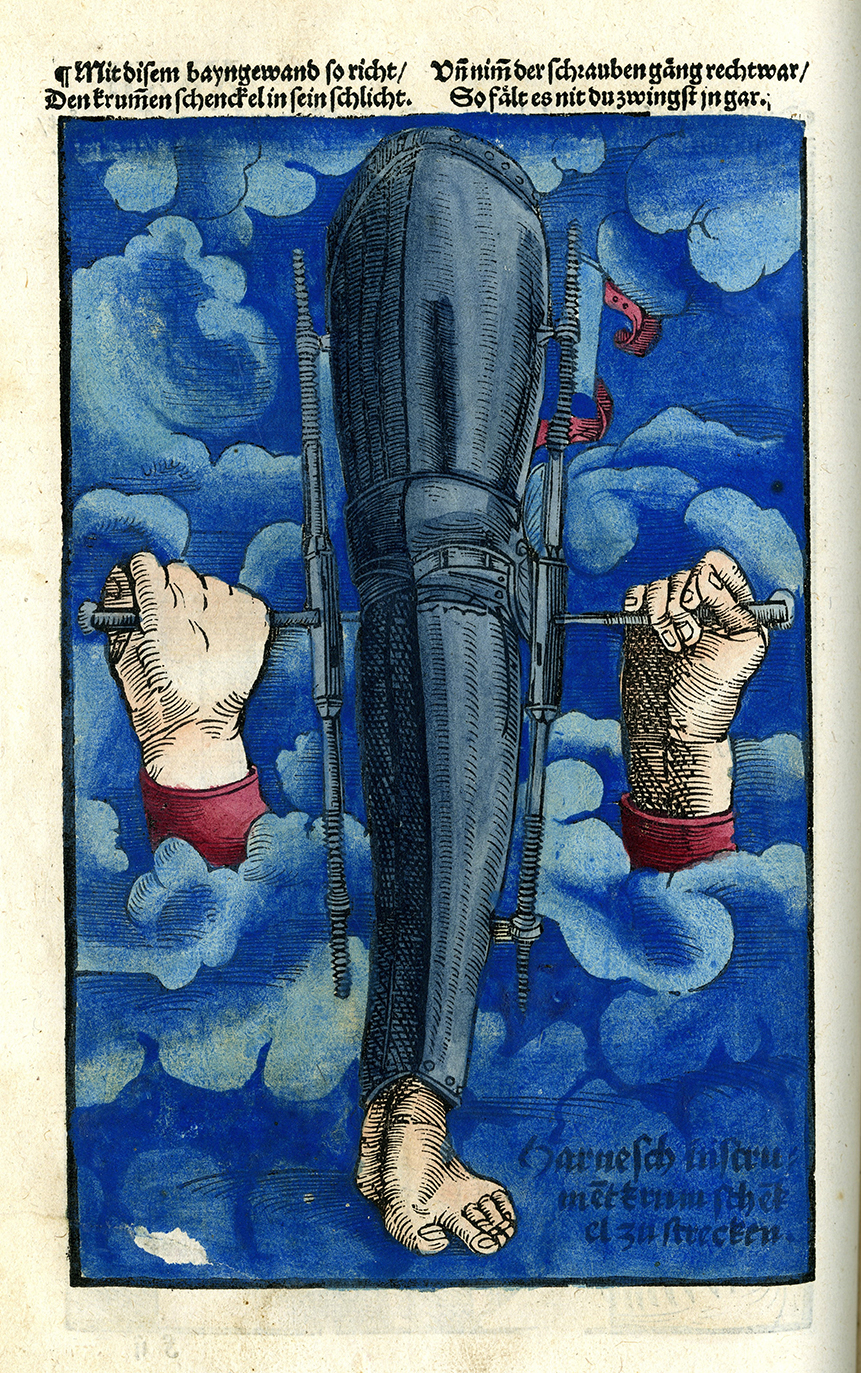Feldtbuch der Wundartzney, published in Strassburg in 1517, is a once-popular surgical field manual containing practical instructions in the care and treatment of the wounded.
It includes instructive and beautifully hand-colored illustrations of Renaissance surgical procedures, including the first printed picture of an amputation (below). Von Gersdorff was a military surgeon for forty years. In that time, he performed nearly 200 amputations. The manual also provides many illustrations of setting broken bones.
During the Renaissance, surgeons treated many diseases of the outer body, whereas physicians held power over the internal and systemic diseases. Therefore, treatments such as the lancing of plague buboes and the application of ointments for skin diseases appear in surgery texts. The second plate depicts leprosy, a disease with skin manifestations. This illustration is also interesting because it reflects the notion persistent throughout the early modern period that the causes of some such afflictions lie in the competing influence of demons and spirits.
The third illustration depicts ergotism, a gangrenous and convulsive disease resulting from the ingestion of fungus-infected rye or cereal. In the Middle Ages, it became known as “St. Anthony’s Fire”, named for the monks of the Order of Hospitallers of St. Anthony in Grenoble, France, who were successful in its treatment and whose establishment became a refuge for sufferers. Members of the order wore black robes and rang small bells to collect donations. Anthony was also the saint of pig-herding and his monks were given special permission to let their pigs run free in the streets. These characteristics of the order found their way into the iconography of St. Anthony, who became a recognized protector against all sorts of skin inflammations.
Below are additional illustrations from the book. Click on the thumbnails for a larger view.

